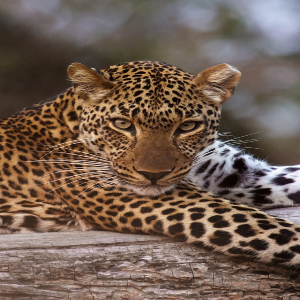Leopards (Panthera pardus pardus) in Gashaka Gumti National Park, Nigeria: historical records and recent sightings

All claims expressed in this article are solely those of the authors and do not necessarily represent those of their affiliated organizations, or those of the publisher, the editors and the reviewers. Any product that may be evaluated in this article or claim that may be made by its manufacturer is not guaranteed or endorsed by the publisher.
Accepted: 21 December 2023
Authors
West-African populations of the African subspecies of leopards (Panthera pardus pardus) are very fragmented, particularly so in Nigeria, Africa’s most populous nation. We compile historical and recent information about the occurrence of these big cats in what is likely their last remaining stronghold: Gashaka Gumti National Park (GGNP) in Adamawa and Taraba States along the border with Cameroon. Leopards in GGNP’s northern Gumti sector are close to extinction, given that its open plains of savannah are heavily encroached upon by illegal cattle grazing. However, in GGNP’s southern Gashaka sector, leopards are better protected, given its often mountainous and densely forested landscape. We present specific data for a 30 km2 forest-savannah area around a research station at Kwano, which harbours sizeable populations of 35 species of prey species leopards target elsewhere. Here, direct evidence for leopard presence (e.g., footprints, scratchmarks, predation incidences, vocalizations, sightings, cameratrap images) amounts to 1 per year. Albeit this encounter rate is very low, it is relatively steady throughout the last 30 years and into the present. We assume that GGNP’s Gashaka sector represents one of the best chances for leopards to survive in Nigeria.
How to Cite

This work is licensed under a Creative Commons Attribution-NonCommercial 4.0 International License.
PAGEPress has chosen to apply the Creative Commons Attribution NonCommercial 4.0 International License (CC BY-NC 4.0) to all manuscripts to be published.







